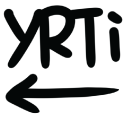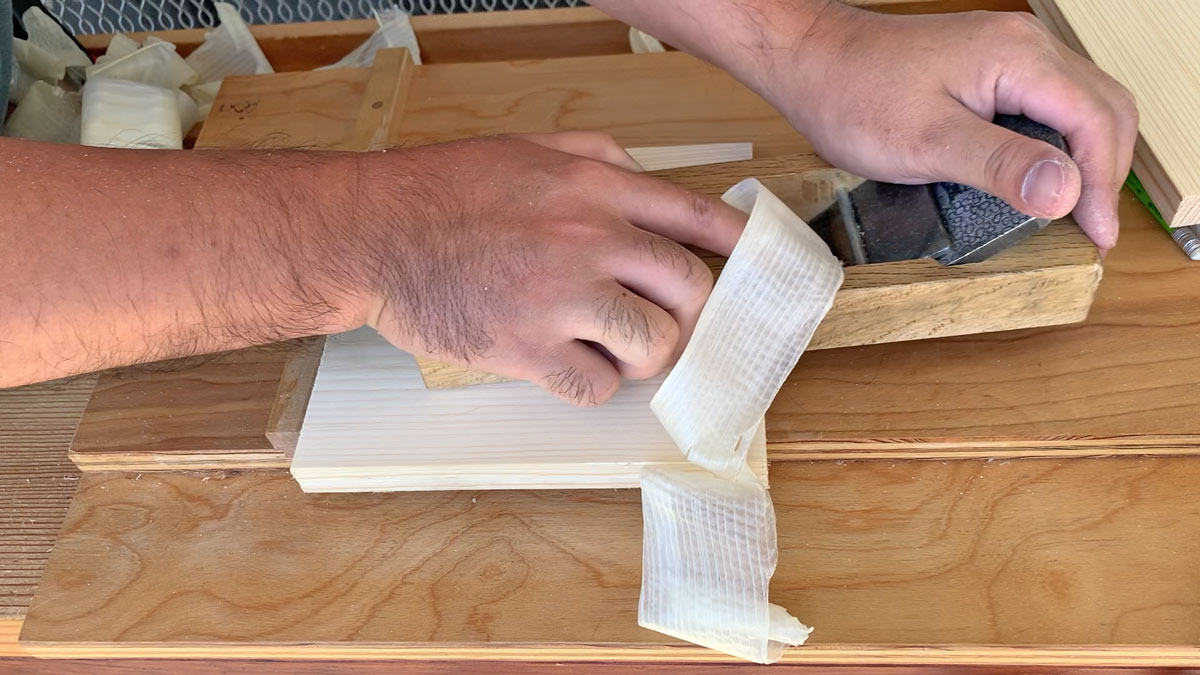As I am often asked about a kanna(buying/set-up/maintenance), I made this page.
First of all, all my kanna planes were around $50 up until very recently (late 2024). I learned how to set up a kanna by watching many YT videos and books written in Japanese.
To me, it looks like “a Kanna set up” and “sharpening an iron” is usually a very sensitive topic in Japan as many craftsman have pride in the way they do so I’m just scared to make the video. I see when inexperienced people like me do it, the comment section sometimes becomes very aggressive and it’s like hell …
Anyways, I can’t explain how to set it up but instead, I can at least share information of my Kanna buying experience (I’m not an expert at all).
Buying Options
Buying a Mass-produced Kanna
There are many possible ways to accidentally destroy a kanna if you don’t know how to adjust it properly so buying a good Kanna from the beginning is kind of risky. Mass-produced Kannas are often almost ready to use with minor and basic adjustments. Kakuri is a bit overpriced in the USA as a mass produced Kanna category but I think it’s decent (sometimes, it’s cheaper to get it from Amazon Japan including shipping to the US). When you properly adjust their Kanna, it works pretty good so at least to me, it was a good option to learn about a Kanna.
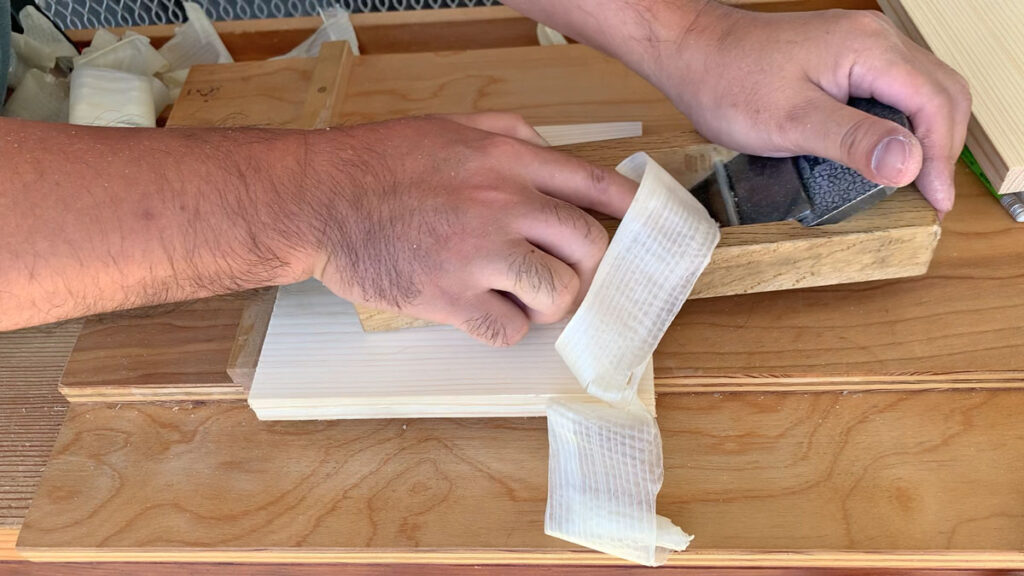
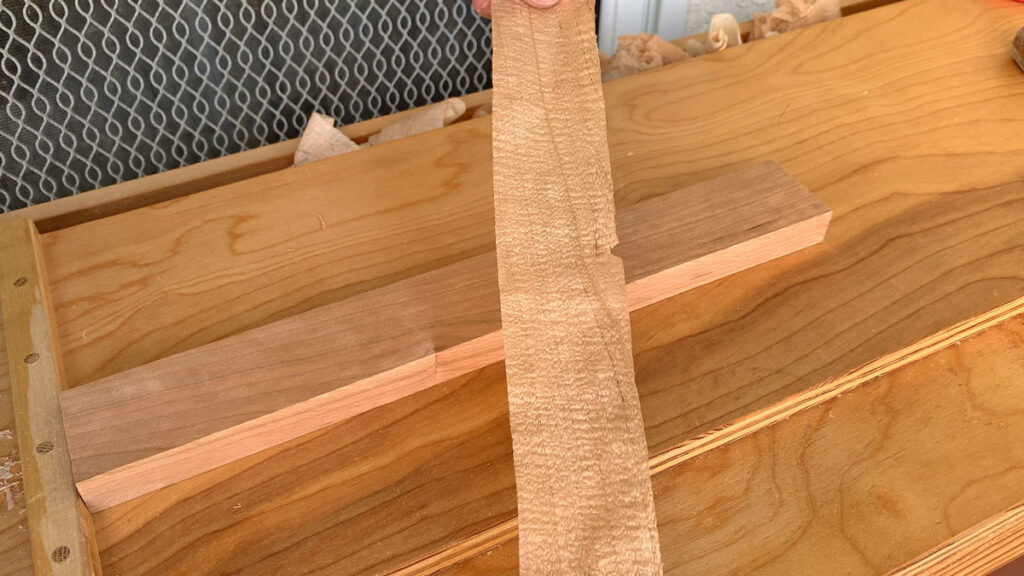
Buying a Decent Kanna
Buying a new decent kanna isn’t that expensive of an option as there is also a reasonable one. The thing is, a Kanna often comes like 70-80% ready to use, meaning, you have to do the rest of 20 – 30% of the work to use.
There are a Ton-ya mei(Store brand) kanna that they usually don’t tell who made it and a Kajiya mei(Blacksmith name) kanna that it’s obviously under the blacksmith name.
Ton-ya mei Kanna isn’t necessarily inferior to Kajiya mei Kanna and my unknown Ton-ya mei Kanna was about $100 and it works very good.
Sugu-tsukai(直ぐ使い) option:If you want to skip the initial set up on a decent kanna, there is “Sugu-tsukai kanna” meaning “ready-to-use kanna”. Some stores put Kanna with a note of Sugu-tsukai to sell and some other stores offer a service that you can ask them to make it Sugu-tsukai (usually $30-50 extra).
However, unlike western planes, even once it’s all set, a Kanna periodically needs some adjustments to use.
Kanna Details
When it comes to just a Hira-kanna(regular plane), there are still things to consider.
Size
As a main Kanna, I’ve heard furniture makers often use Sun Roku(寸六/寸6) and carpenters use Sun Pachi(寸八/寸8). Then, Sun Shi/Sun-yon(寸四/寸4) is a handy one.
The sizes are(roughly):
- Sun Shi – Blade width 60mm(2.36″) – Cutting width 50mm(2″)
- Sun Roku – Blade width 65mm(2.56″) – Cutting width 57mm(2.25″)
- Sun Pachi – Blade width 70mm(2.75″) – Cutting width 63mm(2.48″)
I’ve used Sun Roku but as my hands are big, I use Sun Pachi now and I feel comfortable. It doesn’t go with the bigger is the better logic and if it’s bigger, the maintenance is harder. I also like Sun Shi as a little handy guy.
Irons
Popular irons for a kanna are Blue steel/Blue paper steel(青紙/Aogami), White steel/White paper steel(白紙/Shirogami), High speed steel(ハイス/Haisu), Swedish steel(スウェーデン鋼/Swe-den ko).
If you have no preference, as I expect that you mostly handle hardwood, getting a blue steel one would be a safe choice.
Base
A Kanna base is usually made by Japanese Oak. There are usually two types and they are sometimes confusing. One is called “柾目(Masame)” meaning “quarter sawn” and the other one is called “追い柾(Oimasa) or 追い柾目(Oimasame)” meaning “rift sawn”. However, when it comes to a Kanna base with Japanese Oak, what in general is called “flat sawn” is called “quarter sawn”. It’s confusing, right? Look at the picture below. The left one is called a quarter sawn base and the right one is a rift sawn base.
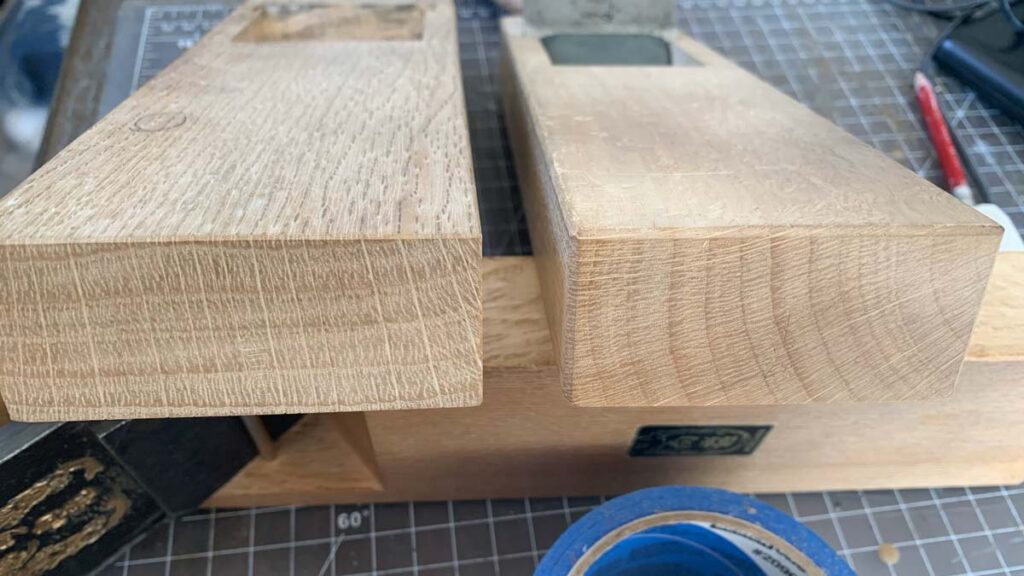
Anyways, a quarter sawn one is often said, it’s more stable(less movement) but there is a risk to be split easily when tapping the base to adjust a blade. The lift sawn one is stronger against the split but it’s worn out quicker and unevenly due to the grain difference between left and right side.
Some Kannas come with a base made by a known base craftsman. The names I know are なしや(Nashiya), 小吉屋(Koyoshiya), 猪本(Inomoto), and 堀場(Horiba) but I have no idea who else are known makers. I was lucky that some of my kannas came with those names but I’m too inexperience to know the difference yet.
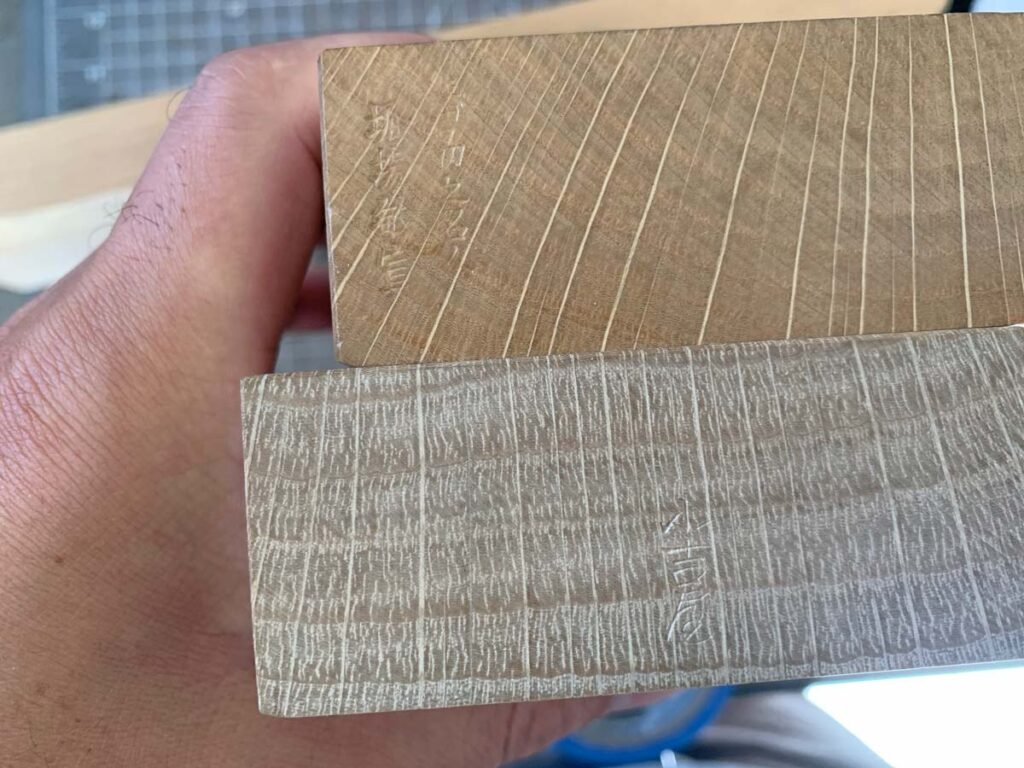
Risk of Buying Kannas from Japan
A Japanese Kanna has a wooden base and the humidity over there and here in the US (depending on where you live) are so much different. Once I bought some Kannas from Japan in Japan when it was in the high humid summer season and brought them back to California, where it’s super dry, one Kanna got deformed crazily and another one had a little crack.
Tool Stores
Ship Internationally
This store is the only store(out of the stores I’ve used) that they officially do international shipping and also the website is in English. I’ve talked with them(in Japanese) and people are so nice.
Others
If you have a friend in Japan, these stores are good. I only state the stores where I’ve used and also I’ve talked in person or over the phone (They are nice people).
井上刃物/Inoue Hamono, さがみ大工道具館/Sagami Daiku Dougu kan (Toolmate),のぼり刃物/Nobori Hamono, 橘産業/Tachibana Sangyo, 丸半金物/Maruhan Kanamono.
If you negotiate(in Japanese language), they might ship items internationally but the shipping damage risk is yours. In fact, when I talked with Inoue Hamono in Japan, he seemed to be like he can ship items internationally(not 100% sure) and Nobori Hamono store guy kindly shipped items to my US address.
Other stores I’ve used but never talked are Chihara Kanamono and Hamadaya.
The reason I used so many stores is, craftsman-made items are very limited in quantity. Due to their availability, I needed to use multiple stores to buy all the items I wanted(not necessarily Kanna).
What else do you need?
To use/maintain kannas, the items I use are the following.
Plane adjusting hammer
Some people say, to protect a kanna base from splitting, you need to use a wooden mallet. Some other people say use a brass hammer to tap your precious plane iron so it doesn’t damage it while you can tap it efficiently. I also see many others just use a metal hammer but tapping it gently.
Well, so I found this brass hammer with delrin tip(plastic) on one side on Amazon USA and it’s made in USA but reasonable. I’m okay with this hammer but there are 2 things I don’t like about it. The Delrin tip is replaceable so you can twist it to take it off. It sounds cool but in reality, it’s wobbly and I just CA glued it. The second thing is, I use 8oz one and it’s a little light so I have to hit a kanna harder. I’m not sure how 16oz one is(1 size heavier option), but ideally, I’m looking for something similar but 10-12oz.
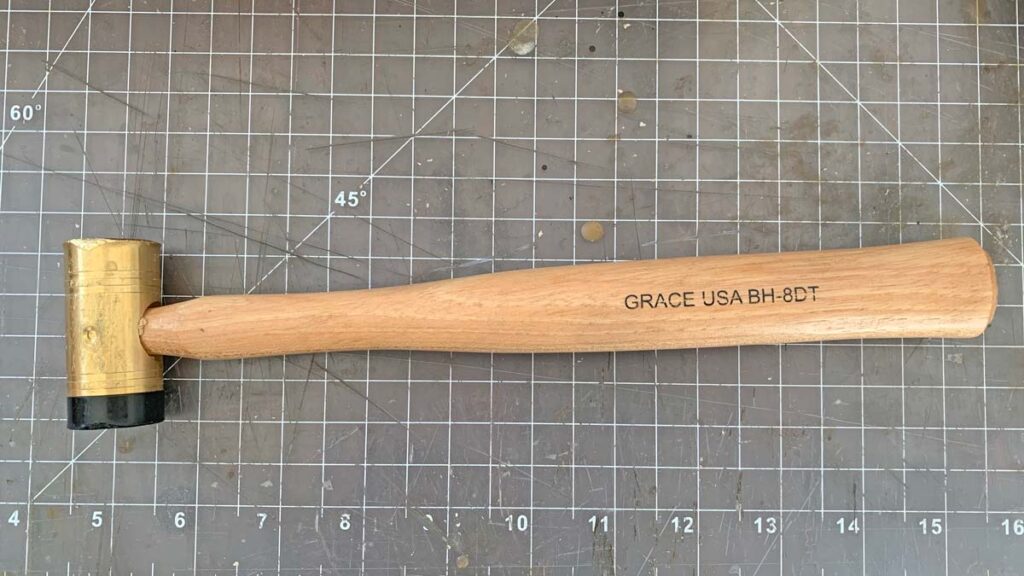
Surface Plate
This isn’t a must have item but it makes things so much easier when flattening your kanna base. I bought WoodRiver one (6″ x 18″ x 2″) $65 from Woodcrafts and I like this so much. I don’t know how accurate it is but I would say it’s accurate enough and the reason I like this one is, it’s 18″ so I can flatten my Nagadai(a jointer plane), too. Additionally, I like how it’s only 6″ wide and 2″ thick. If you pay $120, you can actually get 12″ x 18″ x 3″ (doubled the width and 50% thicker!!) and it sounds better deal but for people like me, who doesn’t have a space, the one I get is only 26lb so it’s relatively lighter to move(still heavy). I didn’t consider the weight factor when buying it but I’m glad I didn’t buy the bigger one(80lb)….
Only the thing you may not like this is, it’s a light gray stone died in black and I don’t know why they needed to do it…
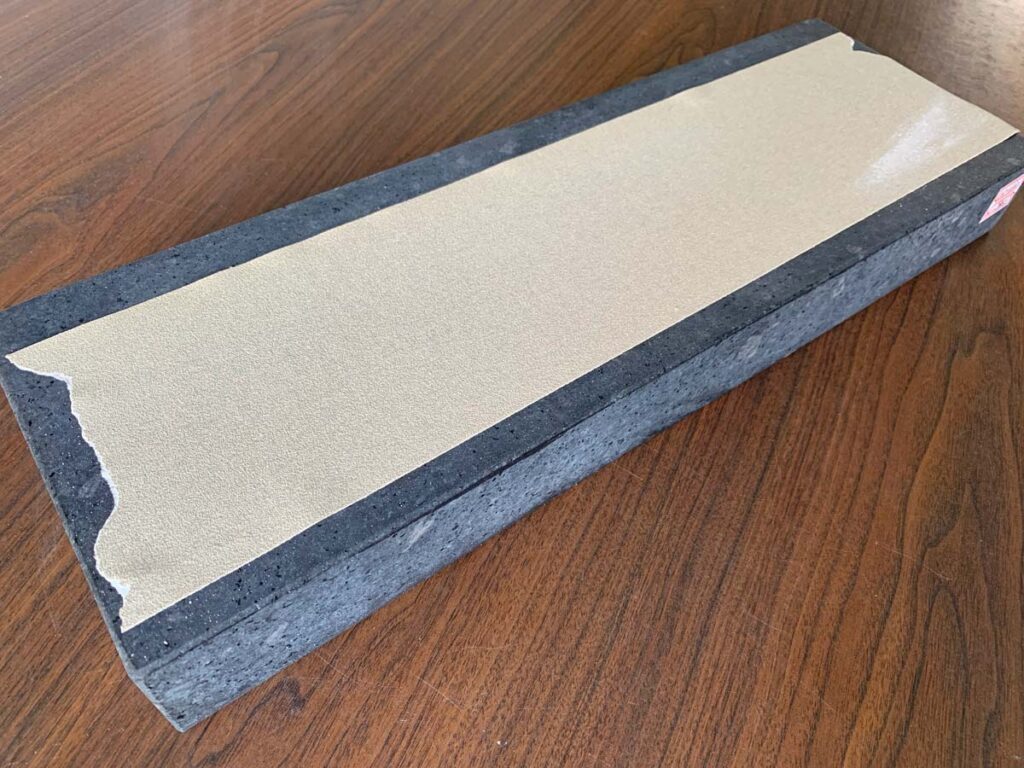
Anvil
When you do Uradashi, you will need an anvil and a regular metal hammer. I bought this anvil from a random seller on ebay and it was less than $40. It’s only 9lb but it works very good. I used a metal file to round the edge a little bit(and I just destroyed one Kakuri plane iron when doing Uradashi so be careful!!!).
And yes, after Uradashi process, I use a diamond plate(atoma #140) to flatten the cutting edge(Uraoshi process). However, there is many fake Atoma plates on Amazon. Unless you know what is the real one, it’s better going with DMT maybe.
I myself once had an obviously fake Atoma plate and I had to return it.
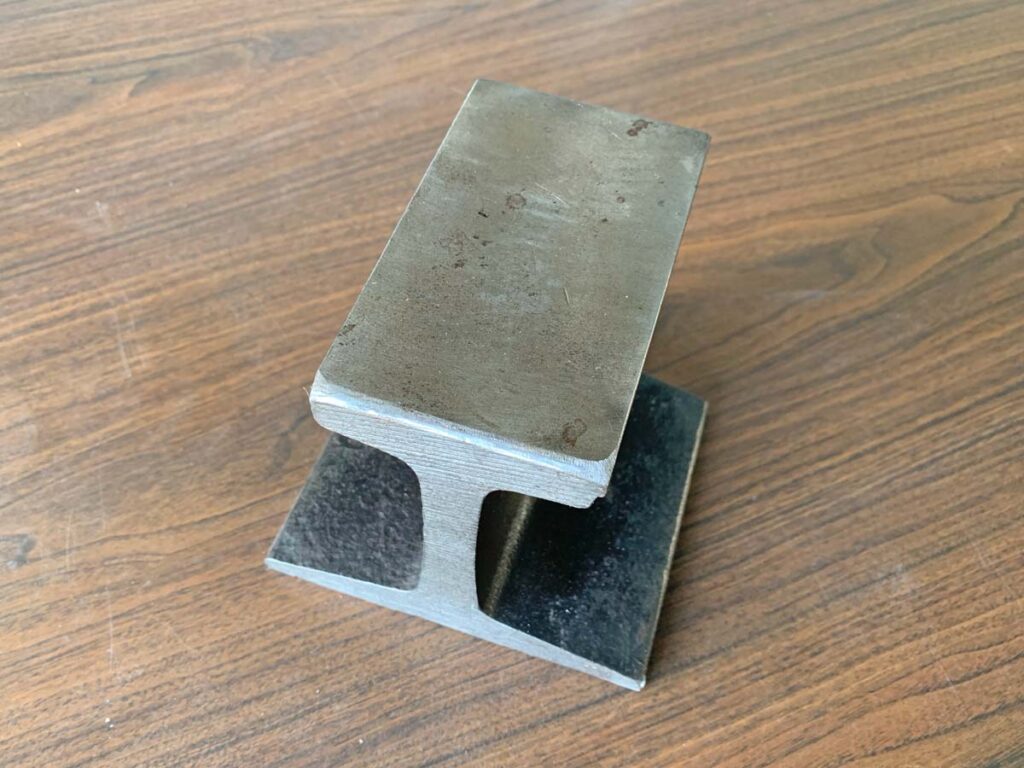
Advice for the Set Up
It’s not an advice but I can make you feel better. I messed up the set up of a blade – a good one, my friend, yeah, I messed up the good one. It’s 100% functional but it looks ugly. I was sad but I believe we get better by going through these experience.
